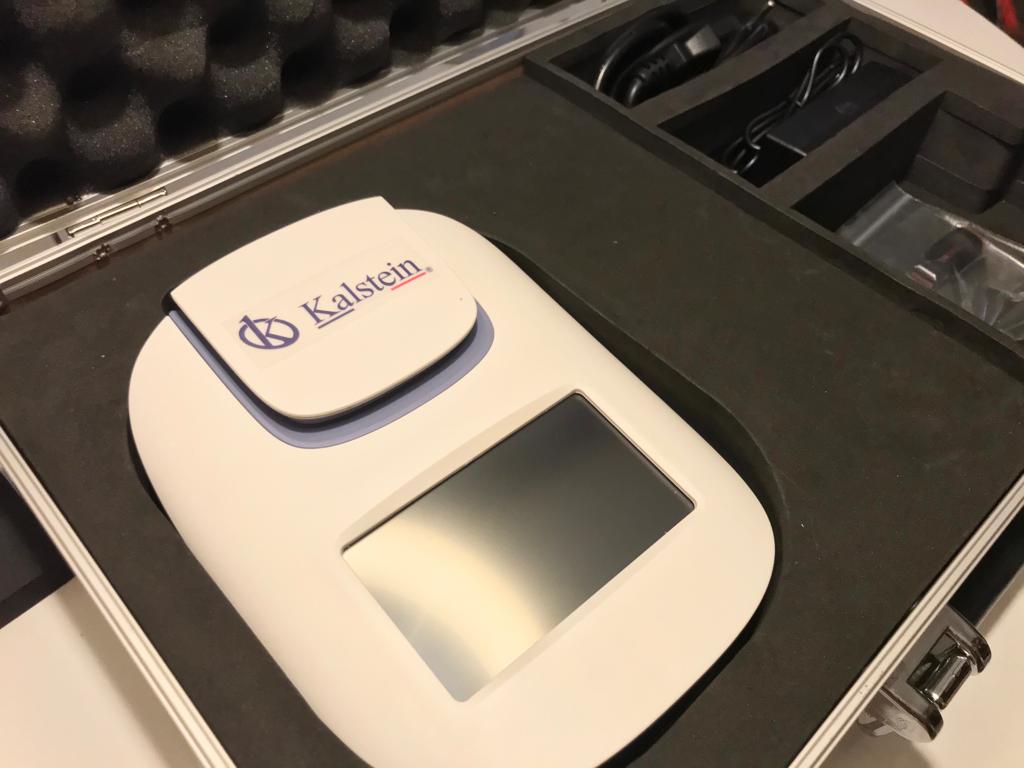Luminescence is the emission of light by any substance, due to electronically excited states, by means other than combustion, which is why it occurs at lower temperatures. Depending on the nature of the excited state it can be of two types: fluorescence and phosphorescence.
Fluorescence occurs when a substance emits visible light by absorbing radiation of a shorter wavelength, such as ultraviolet light. Fluorescence is the molecular absorption of light energy at one wavelength with an almost instantaneous response (occurring in the order of 108 s-1) at another, usually longer, wavelength. It differs from phosphorescence in that it is able to store the light energy that it then projects.
Fluorescent compounds have an excitation spectrum and an emission spectrum. These spectra are often called the fluorescence signature or fingerprint of a compound. Some molecules naturally fluoresce, and others can be modified or even special dyes added to them. Fluorescent compounds are usually aromatic molecules, some inorganic crystals, noble gases in their different phases, some simple inorganic molecules in vapor phase, rare earth inorganic ions, amino acids, proteins, enzymes, among others. Fluorometry is the optical analysis technique that measures fluorescence. It is a simple methodology that does not require more experience to put it into practice and has multiple applications in the field of scientific research.
The Fluorometer
The fluorometer is an analytical instrument designed to determine the concentration of fluorescent compounds as low as 1 ppt. It is an integrated modular device that allows measuring the parameters of intensity, wavelength and adsorption and emission spectrum. These parameters help identify the presence and amount of specific molecules in a medium. Absorption and emission spectra reflect vibration level structures and excited electronic states. There are two types of fluorometers, the filter fluorometer and the spectrofluorometer. They differ in how the wavelength with which the measurement is made is selected.
In the filter fluorometer, optical filters are used to limit the incident and emission wavelength, and reduce the effects of fluctuations in the response. The device has an excitation source, filters, sample cells and detectors of a relative measurement, it can be calibrated with a known concentration standard. They mainly use a single beam configuration for intensity control. It is a good option when sensitive quantitative controls are desired for specific compounds.
Characteristics of Fluorometers
- Light source: it is the lamp that provides the energy that excites the compound. They can be of Xeon (λ from 190 to 1200 nm), mercury vapor which are usually more intense than xenon lamps, LED technology lamps, which offer better efficiencies than incandescent light bulbs.
- Wavelength range: the analysis ranges usually range from 190 to 1100 nm, this feature is related to the configuration of optical filters, both absorption and emission.
- Dynamic range: is the signal-to-noise or signal-to-white ratio, which means the minimum concentration that can be measured above the background fluorescence of the interference. This characteristic is related to the detectors of the equipment and the sensitivity to measure minimum concentrations, usually within five orders of magnitude.
- Band step: The filters can be used alone or in combination to select the desired spectral band, and can range from 0 to 30 nm.
- Sample container size: the size should be adequate, as the trajectory wavelength affects the limits of linearity and detection.
At Kalstein we are MANUFACTURERS, we offer you high quality equipment, the fluorometer of the YR412-A series, has a 260 nm LED light source, linear dynamic range of 0.995, with photodiode detector and sensitivity 0.5ng/ml. It has a lower DNA detection limit (0.5pg/ul), you can combine the instrument with the reagent you choose. It is a lightweight equipment that offers practicality and versatility for work in the laboratory. For more information about our products, for PURCHASE or SALE, visit us on our website: HERE


